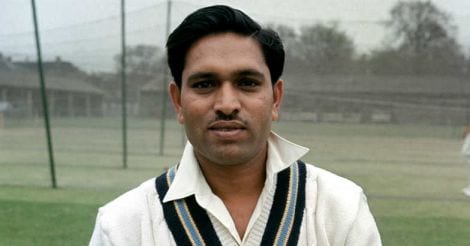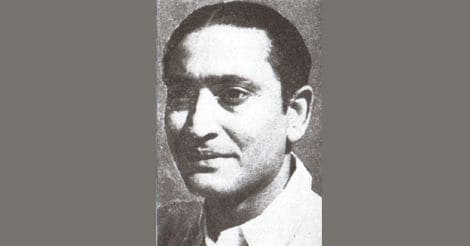Bangladesh created history by winning the first Test in the recently-concluded two-match series against Australia at Mirpur by 20 runs. The architect behind the triumph was all-rounder Shakib Al Hasan who picked up 10 Australian wickets for 153 runs with his left-arm spin bowling, besides scoring 84 in the first innings. Though they gained formal entry to Test cricket in 2000 and have some good victories in limited overs cricket to their credit, Bangladesh could record only nine wins in the 100 Tests they had played till the Australia series. This was also the first time that Bangladesh defeated Australia in a Test match and hence the event did indeed merit special celebrations.
This brought memories of the occasion when an Indian side defeated Australia in a Test match for the first time. This had taken place in 1959 when the Aussies led by Richie Benaud toured India for a five-Test series. Australia always sent their full strength sides to tour the subcontinent and this one had in its ranks some of the all time greats of the game such as Neil Harvey, Alan Davidson, besides skipper Benaud himself. Aussies played cricket the hard way, without yielding an inch on the ground and this made them popular tourists as well.
Troubled times
Before going into the details of India’s win, a little bit of the state of Indian cricket during that period of time is required to be recounted so that one gets some idea about the achievement. The second half of sixth decade of 20th century was a bad one for Indian cricket as the performances of the national side had hit a nadir. India played 10 Tests during the year 1959, out of which they lost eight. The year started with the third Test of a home series against the West Indies, which India lost by a whopping margin of an innings and 336 runs. This was followed by a thrashing by 295 runs in the next Test at Madras. India managed to earn a draw in the final Test of that series. This was also the infamous series when India was led by four captains in five Tests! Following this, they lost all the five Tests during the tour of England in the summer of 1959. When the five-Test series, with touring Aussies commenced in December, 1959, even the most die hard Indian cricket fan did not entertain hopes of the team winning any of the matches. Hence no eyebrows were raised when India went down without any fight in the first Test at Delhi by an innings and 127 runs.
New strip at Green Park
The second Test of the series was to be played at Kanpur where a new turf pitch had been laid down, replacing the matting wicket that was hitherto in use. India made three changes in the side that lost the first match - they included Ramnath Kenny, a middle order batsman in place of medium-pacer Ramakant Desai; in place of Nana Joshi, the stumper, came Naren Tamhane and Venatappa Muddiah, the off spinner was replaced by Jasu Patel. No one expected these changes to make even the slightest impact on the result of the match.
India won the toss and batted first, only to be skittled out for a paltry 152. Davidson was the wrecker-in-chief taking five for 31 while Benaud bagged four conceding 63 runs. Australia started off well, with Colin McDonald and Gavin Stevens putting on 71 runs for first wicket, giving the impression that a big total was in the offing. At this juncture, skipper G.S. Ramchand brought on Patel, who had been bowling innocuously till then, to bowl from the end opposite to where Davidson had been operating. Patel pitched one on the rough created by Davidson, the ball jumped a bit and Stevens hit the ball back to the bowler for a comfortable return catch.
 Chandu Borde. File photo: Getty Images
Chandu Borde. File photo: Getty ImagesThis wicket charged up Patel, and his deliveries started acquiring more bite and venom. Neil Harvey, one of the best batsmen in contemporary cricket, brought all his experience into play to tackle Patel, while McDonald continued in a cavalier fashion. However, neither of them could keep Patel at bay for too long and had their stumps rearranged by the off spinner. Chandu Borde, who was a useful bowler, dismissed Norm O'Neill, the new batsman, sowing further panic in the Aussie ranks. Patel capitalized on this and dismissed Ken Mackay, Benaud and Barrington Noel Jarman in quick succession to pin Australia down but Davidson found a useful partner in Lindsay Kline and they took the score past 200. However, Patel was in his element. He first dismissed Kline, then bowled Davidson with one that kept low and wrapped up the Australian innings immediately thereafter by forcing a top edge from last man Gordon Rorke, which was held by Abbas Ali Baig.
Patel led the Indian side back to the pavilion accompanied by a standing ovation from the packed stadium. He had taken 9 out of 10 wickets that fell, giving away only 24 runs in his second spell, after an unimpressive wicketless first spell where he conceded 45 runs. Australia, who had appeared set for a big first innings score suddenly found themselves dismissed for 219 runs, a lead of 67 runs. But far more important than the quantum of lead was the fact that none of the Aussie batsmen appeared to have any clue as to how handle Patel. It was this aspect that gave Ramchand the confidence that any target in excess of 200 would prove to be difficult while batting last on that wicket.
India fared better in the second innings, with Nari Contractor scoring a doughty 74, while Kenny made a fluent half-century. Decent contributions by Borde and Bapu Nadkarni helped India reach a total of 291, thus leaving Australia a target of 225. Davidson was once again the chief wicket-taker scalping 7 wickets in a energy sapping spell of bowling wherein he sent down 57.3 overs, conceding 93 runs.
Umrigar chips in
Australia lost Stevens early to Patel, but McDonald and Harvey eschewed all risks and pushed the score along with singles and twos. When it appeared that this pair might prove to be an obstacle for India, Polly Umrigar struck, clean bowling Harvey. Umrigar, who was enjoying a rare opportunity of bowling a long spell in Test cricket, removed O'Neill and Mackay and suddenly Australian batting appeared to be very fragile. Patel dismissed Davidson, who was capable of lusty hitting, and Benaud, off successive balls to raise visions of an Indian victory. This soon became a reality as Umrigar accounted for Jarman and Patel finally ended opener McDonald’s long vigil at the crease, having him stumped by Tamhane. Thus Aussie second innings folded up for 105 runs, leaving India winners by 119 runs. Patel took five wickets for 55 runs in the second innings to finish with match figures of 14 for 124, while Umrigar rendered able assistance from the other end picking four wickets giving away only 27 runs in 25 overs!
I once had opportunity to ask Umrigar about this match and his memories about this victory. Polly Kaka, as he was popularly known, was a gracious host and even though bogged down by illness, his voice had lost none of its “boom”. “Patel was unplayable on that track. He was not a conventional off spinner in that he delivered the ball from a height and hit the seam at a fastish pace. But he exploited the rough made by Alan Davidson on the pitch and Aussie batsmen started getting psyched out, once he picked up the first couple of wickets. The unpredictable nature of the wicket also helped as you could see that almost all his dismissals were either bowled or leg before the wicket. It was a great Test as we could finally record a victory after many losses and Patel was instrumental in scripting it”. He was modest about his own efforts merely saying that he just tried to keep the ball in the good length spot, and the pitch as well as the batsmen did the rest!
This was indeed a momentous victory for India and helped in salvaging some of the pride that had been lost on account of repeated defeats at home and abroad. Though India lost the fourth Test and then series 2-1, one could say with confidence that team was only defeated and not disgraced. The win in Kanpur helped restore confidence in the national side and went a long way in Indian cricket enter the 1960s on a positive note.
Patel played in only two more Tests after Kanpur and he could not repeat his magic with the ball. Out of the 29 wickets that he took from the seven Test matches he played, 14 came from the newly laid pitch at Kanpur! His bowling figures remained the best ever by an Indian in a Test match till Anil Kumble went one better and picked up all 10 wickets in an innings against Pakistan in 1999. But Indian cricket would never forget the extraordinary spell by Patel at Kanpur, where he weaved magic and lured Aussie batsmen to their doom to script an incredible Indian victory.
(The author is a former international umpire and a senior bureaucrat)
Read more from Vantage Point: Durani, the romantic hero of Indian cricket

























 Jasu Patel. Courtesy: Wikipedia
Jasu Patel. Courtesy: Wikipedia
